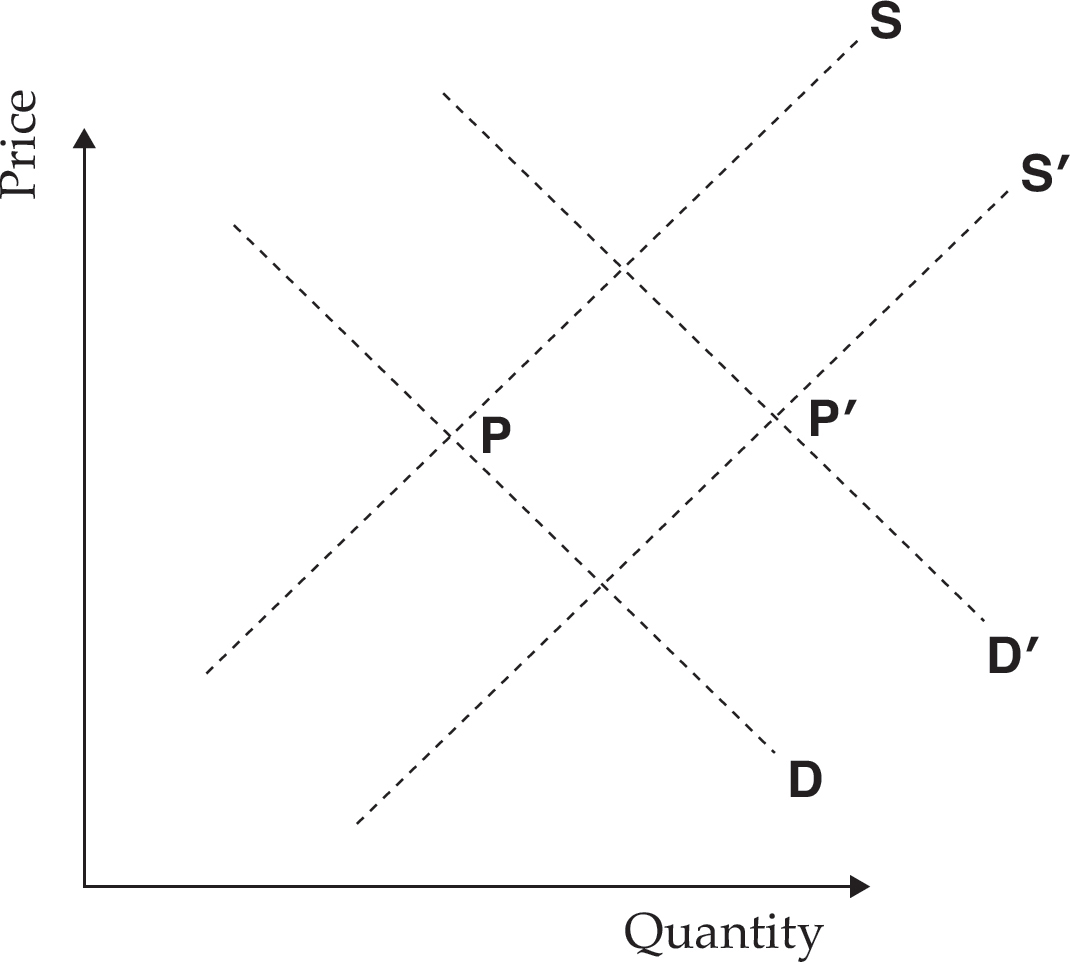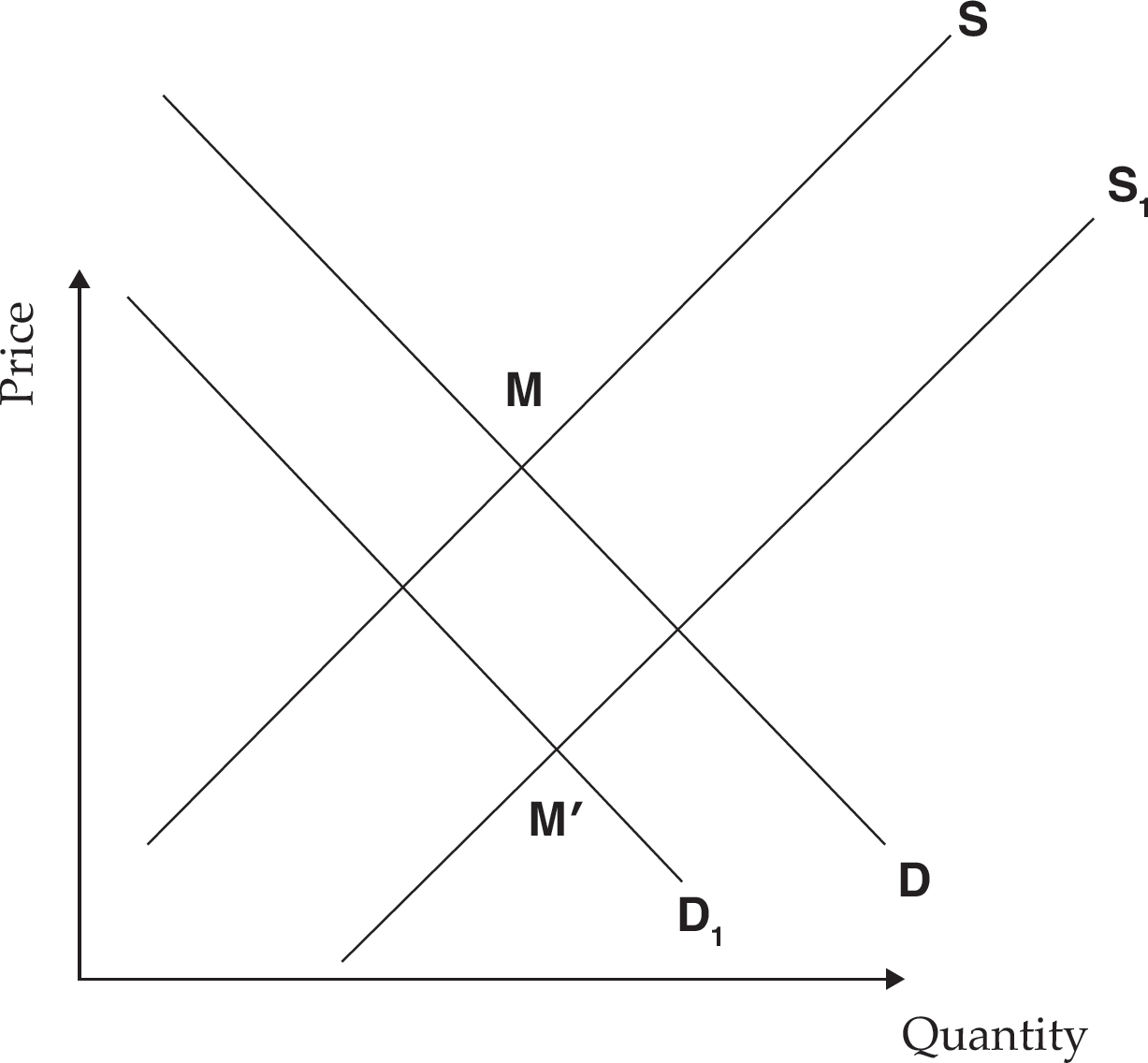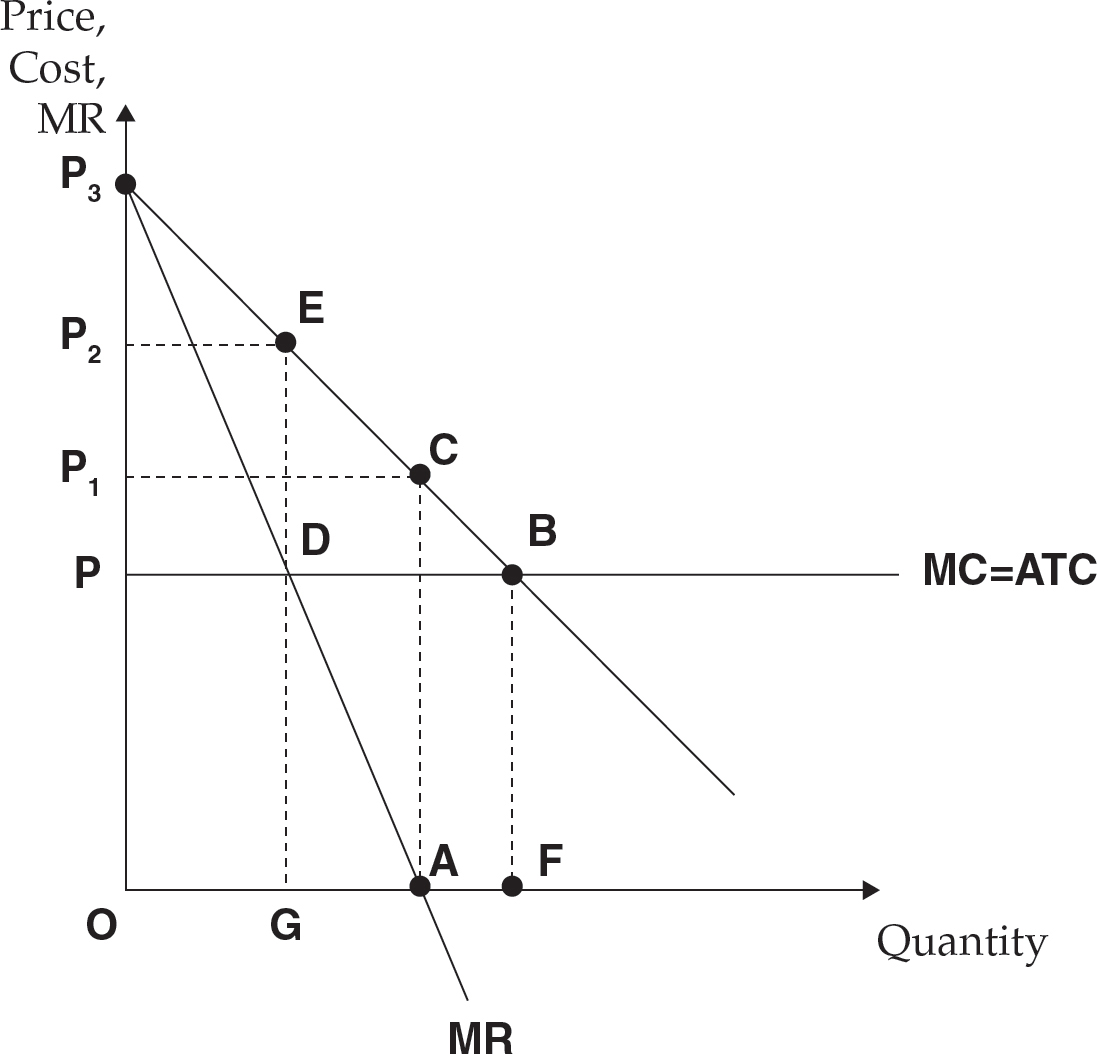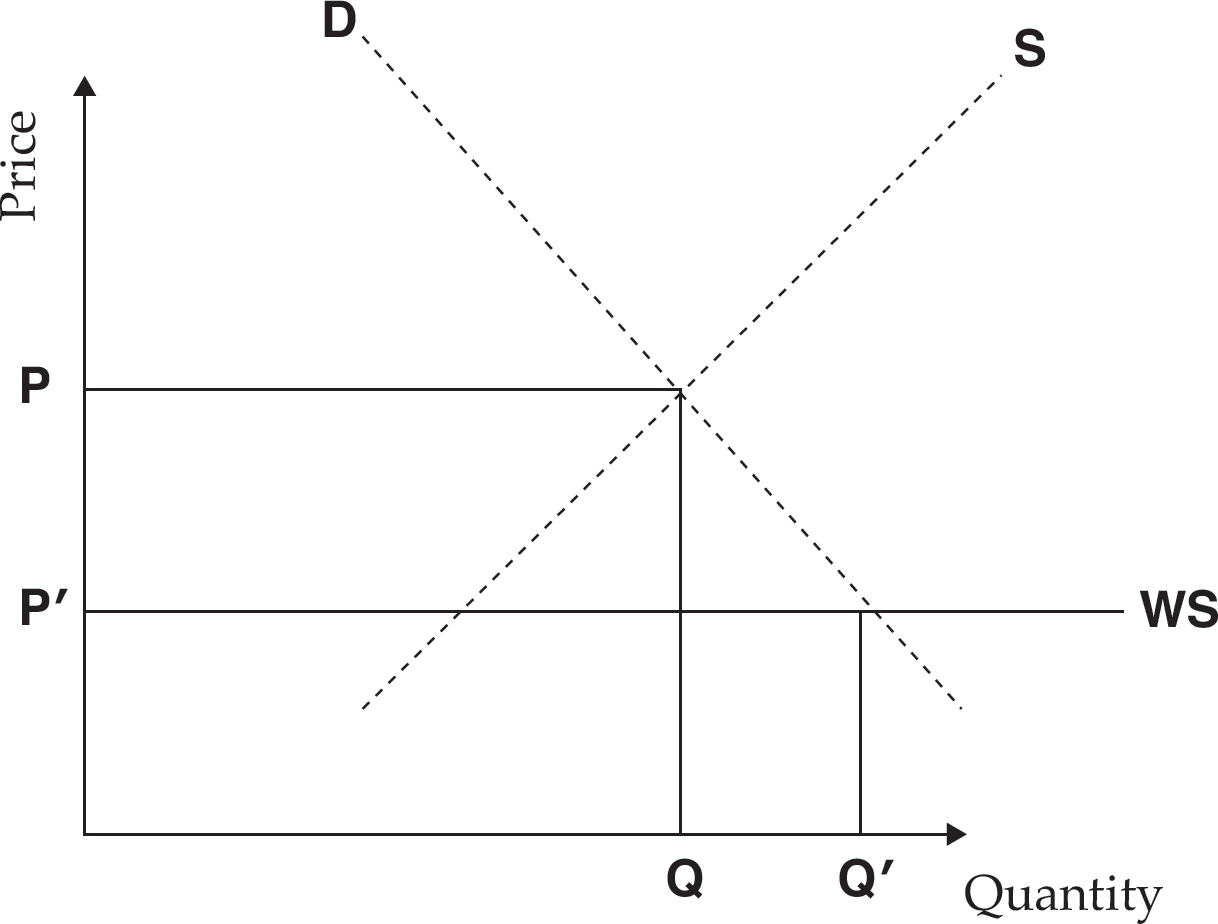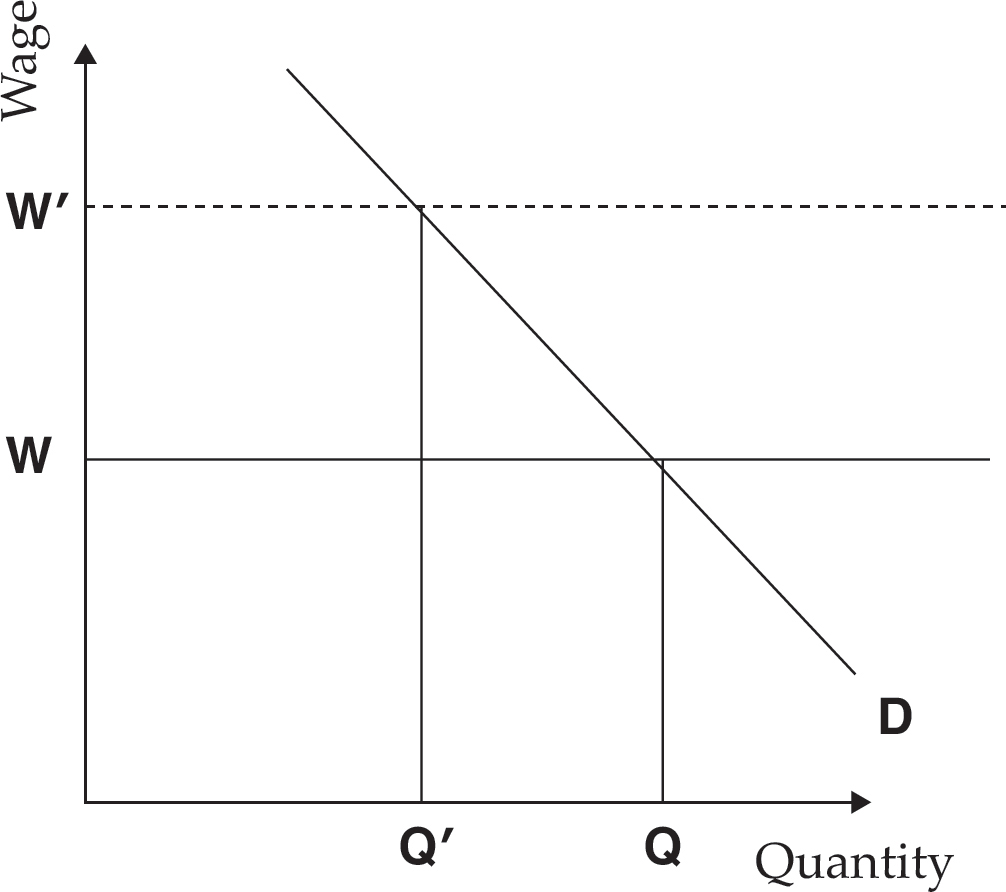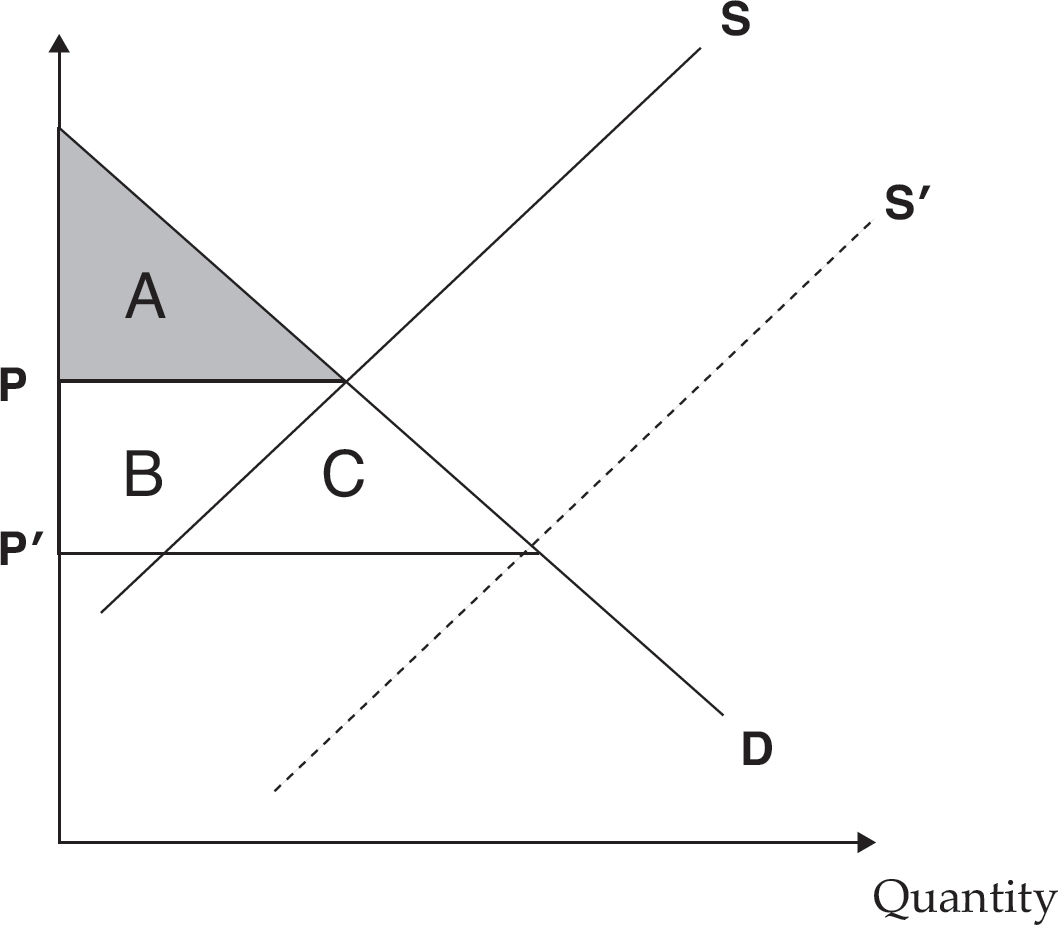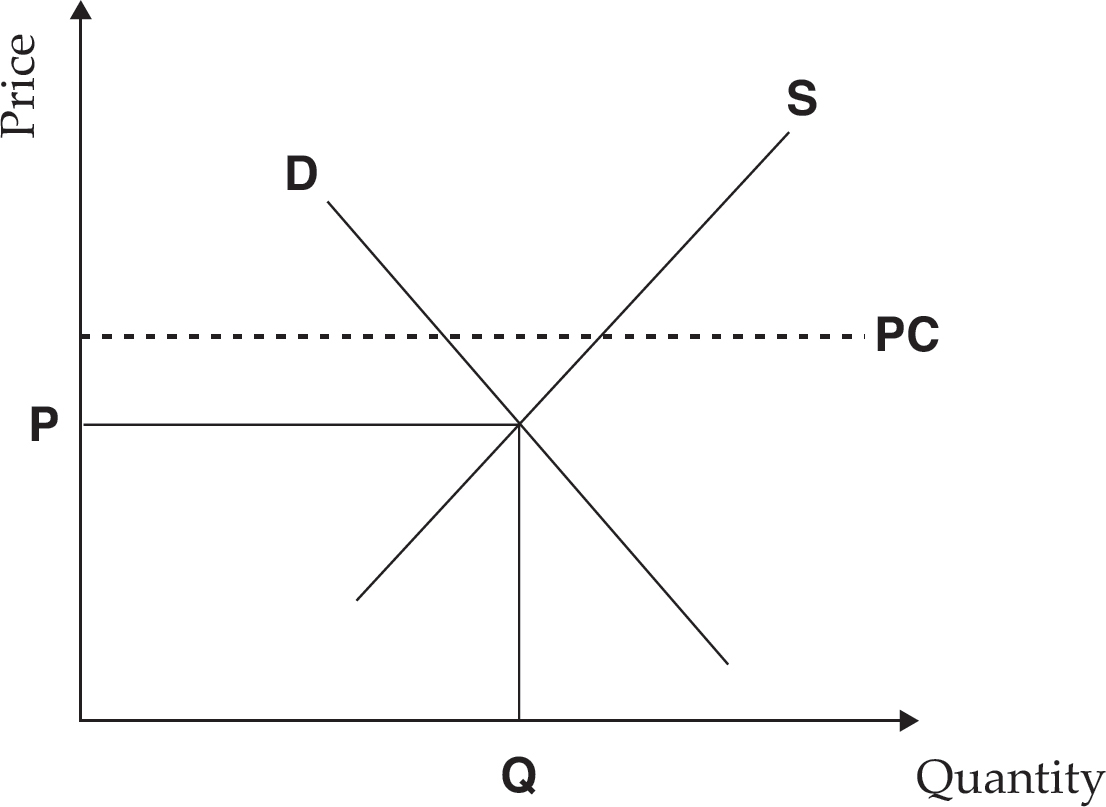1. A
The question asks about demand, so eliminate any answer choices that focus on supply—eliminate (B), (D), and (E). The Fisher effect relates to monetary supply, so eliminate (C). The demand curve is downward sloping because each additional unit a consumer consumes gives that consumer less utility than the previous one; therefore, the consumer is willing to pay less for additional units, creating a downward sloping demand curve. The answer is (A).
2. B
The question asks about supply, so eliminate (C) because it focuses on demand. Scale (including decreasing marginal costs) and scope refer to a particular firm, whereas the question asks about the aggregate supply of lawn-mowing services. Eliminate (A), (D), and (E). The supply curve is upward sloping because as the price of lawn-mowing services increases, more suppliers are willing to enter the market as their opportunity cost for supplying these services increases compared to their other economic opportunities. In other words, a physician will take the job of a dishwasher if the pay for washing dishes is higher than the pay for being a physician. The answer is (B).
3. B
If the supply increases, then at any price point, the quantity of that good increases, and the supply curve shifts to the right. If the demand increases, then at every price point, the quantity demanded increases, and the demand curve shifts to the right (see the figure below). The combination of an increase in both supply and demand will result in an increase in quantity—eliminate (A) and (C). The change in equilibrium price depends on the relative size of the increase in demand and supply, as well as the relative elasticity of supply and demand. The answer is (B).
4. A
When your choices include “None of the above,” it is important to eliminate all other choices before settling on your answer. In this case, the change is from point M to point M’ in the figure below. This change necessarily results in a lower equilibrium price, but undetermined equilibrium quantity. Therefore the answer is (A).
5. C
According to the graph, Country A can produce 40 TVs or 30 DVD players (or some combination in the middle). Therefore 1 DVD player costs 1.3 TVs in Country A. Similarly, in Country B, 1 DVD player costs 2.0 TVs. Trade would benefit both countries—eliminate (A)—and the opportunity (relative) costs of DVD players to TVs in (D) and (E) don’t match the calculations above—eliminate (D) and (E). As DVD players cost less in Country A compared to Country B, Country A has a comparative advantage in DVD players. Therefore the answer is (C).
6. D
Choices (A), (B), (C), and (E) all refer to factors of production. The cost of the car designer’s studio can be considered either land or capital. The car designer’s time is labor, and the car designer’s creativity can be considered either labor or entrepreneurship. Steel is capital, and rubber is a natural resource. (D) refers to opportunity cost, which is not a factor of production. Therefore, the correct answer is (D).
1. E
The long-run average cost curve is always below the short-run average cost curve except at the cost-minimizing point for that short-run average cost curve. To the left of that point, the firm is using too much capital and fixed costs are too high. To the right of this point, the firm is using too little capital and diminishing returns to scale are causing costs to increase. See Figure 4 on this page. Choices (A), (B), and (C) can be eliminated because the SRAC and LRAC curves will intersect at the quantity for which the amount of capital in question is the cost minimizing amount. Choice (D) can be eliminated because LRAC is below the SRAC due to lack of fixed costs in the long term. Therefore the answer is (E).
2. B
If a monopoly faces a straight downward-sloping demand curve, then the marginal revenue for a monopoly is halfway between the demand curve and the vertical axis. See Figure 10 on this page. Therefore the answer is (B).
3. D
The marginal cost curve always intersects the average variable cost curve at its lowest point (see Figure 3 on this page). Choice (A) can be eliminated because MC intersects MR to find the profit-maximizing quantity. Choices (B) and (E) can be eliminated because the AVC, by definition, represents an average of marginal costs and will not intersect at its minimum and maximum points. Choice (C) can be eliminated because AVC is a parabola with a positive slope and doesn’t have a single maximum point. Therefore the answer is (D).
4. B
The best approach to this question is to use Process of Elimination. Consider that in oligopoly markets, there are a few (possibly large) firms that dominate the market, so eliminate (D). As perfect competition is reduced, these firms do make economic profit, so eliminate (A). As there are only a few firms that would most probably be subjected to antitrust legislation, and some of the antitrust legislation may have been developed in response to the actions of these oligopolies, eliminate (C). Typically in oligopolistic markets there are several buyers and few sellers. Therefore the sellers have market power, so eliminate (E). While interdependence is not a prerequisite for oligopolistic markets, it is a common feature of such markets. Therefore the answer is (B).
5. A
Consider that monopolistic markets are characterized by one supplier and several buyers. The seller thus has the ability to control prices by either fixing prices or limiting quantity. As the firm is limiting quantity to maximize its revenue, it is causing more deadweight loss than a firm ordinarily would in a perfectly competitive market. A monopoly is unlikely to lower prices if in fact it is likely to raise prices, so eliminate (B). A monopoly reduces supply by limiting production, so eliminate (C). A monopoly has only one firm, so eliminate (D). Quality of goods is not discussed, as economics assumes that the goods are identical and meet the minimum quality standards, so eliminate (E). Therefore the answer is (A).
6. D
With a question like this one, it is easier to work out the possible outcomes and compare them to the given choices. Let’s first look at Company’s A strategies: If Company B expands, then Company A does not expand. If Company B does not expand, then Company A does not expand. Therefore no matter what Company B does, Company A’s strategy would be to not expand. And therefore Company A has a dominant strategy, so eliminate (B), (C) and (E).
Turning to Company B, if Company A were to expand, Company B would not want to expand. If Company A does not expand, Company B does not expand. Therefore no matter what Company A does, Company B has a dominant strategy of not expanding, so eliminate (A). As both companies have a dominant strategy, the answer is (D). (Note that as both companies benefit from not expanding, a Nash equilibrium also exists.)
7. C
As the firm is a price taker in the labor market, wages will not be affected, so eliminate (B) and (D). As marginal product of labor has increased (workers have become more productive), the marginal revenue product (amount earned by each worker) has also increased. This will cause the firm to hire more workers until the marginal cost of labor equals the marginal product of labor, so (A) can be eliminated. Therefore the answer is (C).
8. D
A competitive firm’s demand for labor is determined by that quantity when the marginal productivity of labor is equal to the marginal cost of labor (i.e., when the last worker produces just enough to cover his/her wages). Eliminate (B) because the question is framed in regard to the firm’s demand for work, not the employee’s willingness to work. Eliminate (C) and (E) because demand for labor is not restricted by physical products produced or the marginal utility and cost. Eliminate (A) because profits alone do not determine demand for labor. Therefore the answer is (D).
9. B
If the third worker’s MP = 10, then that worker generated income of 10 × $3 = $30. As the worker is paid $15, the firm is making economic profit. Therefore it should hire more workers until the productivity of the last worker just equals the revenue generated by that worker. Eliminate (C), (D) and (E). As more workers are hired (and no other investment in the business is made), each subsequent worker will generate lower and lower marginal revenue and MRPL will decrease. Therefore the answer is (B).
10. A
When a firm produces at a point where MR = MC, then it is maximizing its profits, which is to say that it is producing at the point at which its revenues most exceed its costs (see this page). Therefore the answer is (A).
11. C
Price discrimination occurs when a company can charge different prices to different customers for essentially the same product with the goal of maximizing revenue. Therefore any company that can engage in price discrimination will earn higher revenues than those companies that do not. Therefore the answer is (C).
12. E
To determine Company A’s strategy, suppose Company B opts for a small budget. Company A would opt for a large budget. If Company B opts for a large budget, Company A would opt for a small budget. As Company A opts for either a small or large budget based on Company’s B position, Company A does not have a dominant strategy, so eliminate (A), (B), (C) and (D). Let’s look at Company B’s strategy instead. If Company A opts for a small budget, Company B would opt for a small budget. If Company A were to opt for a large budget, Company B would choose the large budget as well. Therefore there isn’t a dominant strategy for either company. Therefore the answer is (E).
13. B
A monopoly produces less and sells for more than firms in perfect competition, so eliminate (A). As no short-run-versus-long-run data are given, eliminate (C) and (D). Cost data are not given so eliminate (E). Therefore the answer is (B).
14. E
The quantity a monopoly supplies is determined by that quantity where MR = MC (point D). Therefore the quantity supplied would be G (see the following figure). The total revenue a monopoly receives is area P2EGO. The cost is area PDGO, and the profit is P2EDP. Therefore the answer is (E).
15. E
For the same quantity, the supply price has increased. This means that the price of producing that good has increased. The answer that states an increase in production price is (E), so the correct answer is (E).
1. B
Increase in demand refers to a shift in the demand curve. An increase in the demand for a good could be caused by an increase in real income (assuming that it is a normal good), a drop in price of a complimentary good, or a rise in price of a substitute. Eliminate (A) because a change in price would change the quantity demanded, not cause an overall shift in the curve. Eliminate (C) and (D) because they incorrectly define the effects of changes in compliments and substitutes. Eliminate (E) because a shift in the supply curve does not necessarily affect the demand curve. In this case, the best answer is (B).
2. A
The question asks about total utility, which refers to consuming sardines. This question focuses on the demand for sardines, so answer choices that refer to supply (D) can be eliminated. As the question does not refer to demand and supply, any answer choices that need the supply and demand curves—(C) and (E)—can be eliminated. Similarly, utility is independent of cost, so (B) can be eliminated. To maximize the total utility of sardines, they need to be consumed until the marginal utility is equal to zero (regardless of the price). Therefore the answer is (A).
3. D
The question gives data on the supply curve, so answer choices that refer to demand can be eliminated—eliminate (B) and (C). 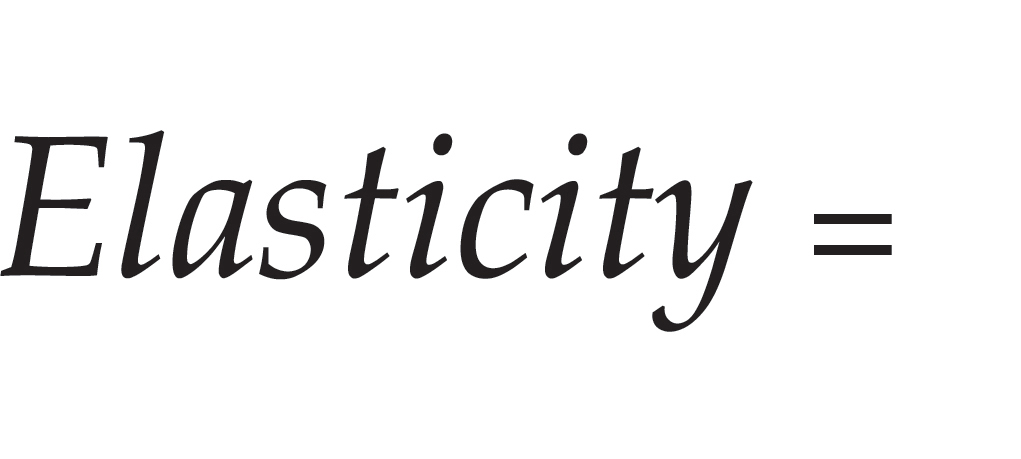

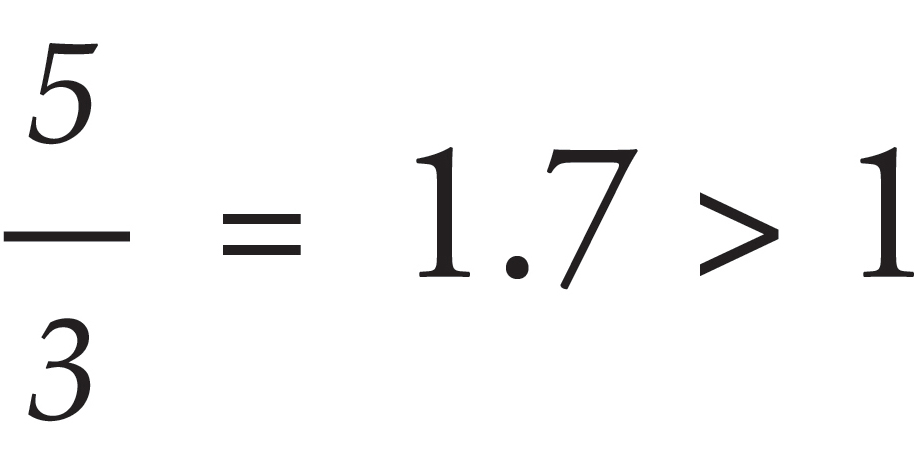 . As the elasticity of supply is greater than 1, the supply is elastic. Therefore the answer is (D).
. As the elasticity of supply is greater than 1, the supply is elastic. Therefore the answer is (D).
4. E
Normal goods are defined with respect to consumer income levels; therefore, answers that do not reference income—(A), (B), and (C)—can be eliminated. As income increases, the demand for a normal good increases. Therefore, the answer is (E).
5. C
Cross-price elasticity refers to the demand of a good when the equilibrium price of another good changes. Choices (A), (B), and (E) can be eliminated as they are not functions of cross-price elasticity. A negative cross-price elasticity means that the demand of a good has decreased when the equilibrium price of another good increases. This means that the two goods are complements. For example, the quantity for rental skis decreases when ticket prices for ski resorts increases. The answer is (C).
6. D
If the elasticity quotient of demand is less than 1, the demand is inelastic. Choices (A), (B), and (E) can be eliminated as they incorrectly define elasticity in terms of the demand price elasticity given in the question, 0.78. Because of the direct relationship between price and total revenue for inelastic goods, the firm should increase its price, as it will increase its revenue. The answer is (D).
7. D
As the question makes no prediction of the utility derived from eating more than three slices of pizza, any answer that mentions consequences after the third slice or makes a non-economic judgment on pizza eating—(A), (B), and (C)—can be eliminated. Total utility increases with the consumption of each subsequent slice, as the marginal utility for the three slices is positive, so eliminate (E). The total utility is the sum of the utility received from consuming each slice. In this case it is 10 + 7 + 3 = 20. Therefore, the total utility from consuming three slices of pizza is 20 utils. The answer is (D).
8. E
A monopsony occurs when there is only one buyer for a specific good (for example, a large company in a small town is virtually the only buyer of labor). As the buyer is interested in maximizing its own revenue, the net result is that wages are depressed and fewer workers are hired. Eliminate (C) and (D) because they incorrectly define changes in payment. Eliminate (A) and (B) because they incorrectly describe changes in the firm’s hiring pattern. Therefore the answer is (E).
9. C
Unions are interested in increasing their members’ wages. They do this through collective bargaining, wage floors, featherbedding, increasing the demand for their goods (the “Buy American” campaign, for example), and other such tactics. One way to approach this question is through Process of Elimination (which is probably the most efficient way as the tactics listed are all union tactics). Another is to realize that decreasing the price of substitute resources makes those resources more attractive and therefore would hurt union wages. Therefore the answer is (C).
10. A
A bilateral monopoly exists when a monopsony buys from a monopoly—i.e., there is only one seller and one buyer of a good or service. See this page. Remember that “mono” in “monopoly” means “one,” so (B) can be eliminated because it references two different buyers. Eliminate (D) and (E) because what is sold is irrelevant in determining a bilateral monopoly. Eliminate (A) because the term “monopsony” is specific to buyers. Therefore the answer is (A).
1. D
Before trade, the price and quantity of cotton would be P and Q respectively (as shown in the figure below). As the world price is below the domestic equilibrium price, the domestic price would fall to P’ and the equilibrium quantity would rise to Q′. As domestic producers would not be able to produce the higher quantities at the lower price, the United States would become a net importer of cotton. The answer is (D).
2. A
The best approach is to draw the supply and demand for labor (see the figure below). As the minimum wage increases from W to W′, the wages rise, but the quantity of labor needed drops. Therefore, increasing the minimum wage would be beneficial for some workers (for those who are employed at the higher wage), but detrimental for others (those who were employed at the lower wage, but are no longer employed). The answer is (A).
3. C
Extracting proportionally more tax income from the poor is by definition a regressive tax (see this page). Therefore the answer is (C).
4. E
As the question does not give any information on the profits the monopoly is making, one cannot comment on them, so eliminate (A), (B) and (C). Regulating a monopoly to allocative efficiency is a measure designed to reduce deadweight loss. Therefore the answer is (E).
5. C
As the demand curve does not change, answers focusing on demand—(A) and (B)—can be eliminated. A subsidy increases supply, so eliminate (E). Consumer surplus is the area under the demand curve between the equilibrium price and the vertical axis (see the following figure). The consumer surplus before the subsidy is shown by region A, and after the subsidy, consumer surplus increases to include regions B and C. Therefore the answer is (C).
6. A
The best way to approach this question is to draw the supply and demand curves (see the following figure). Remember that a price ceiling sets a maximum price a producer may charge. Since the price ceiling (PC) is above the equilibrium price, the equilibrium price and quantity do not change as a result of the price ceiling. Therefore the answer is (A).
7. E
The side with the more relative inelasticity would bear the greater tax burden. If consumers are to bear the majority of the tax burden, then the demand curve should be inelastic and the supply curve should be elastic. Therefore the answer is (E).
